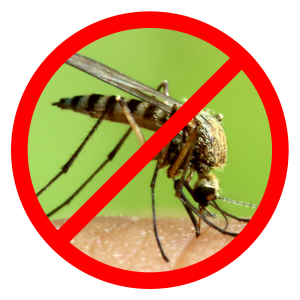Category Archives: Trees & Shrubs
Common Tree and Shrub Diseases
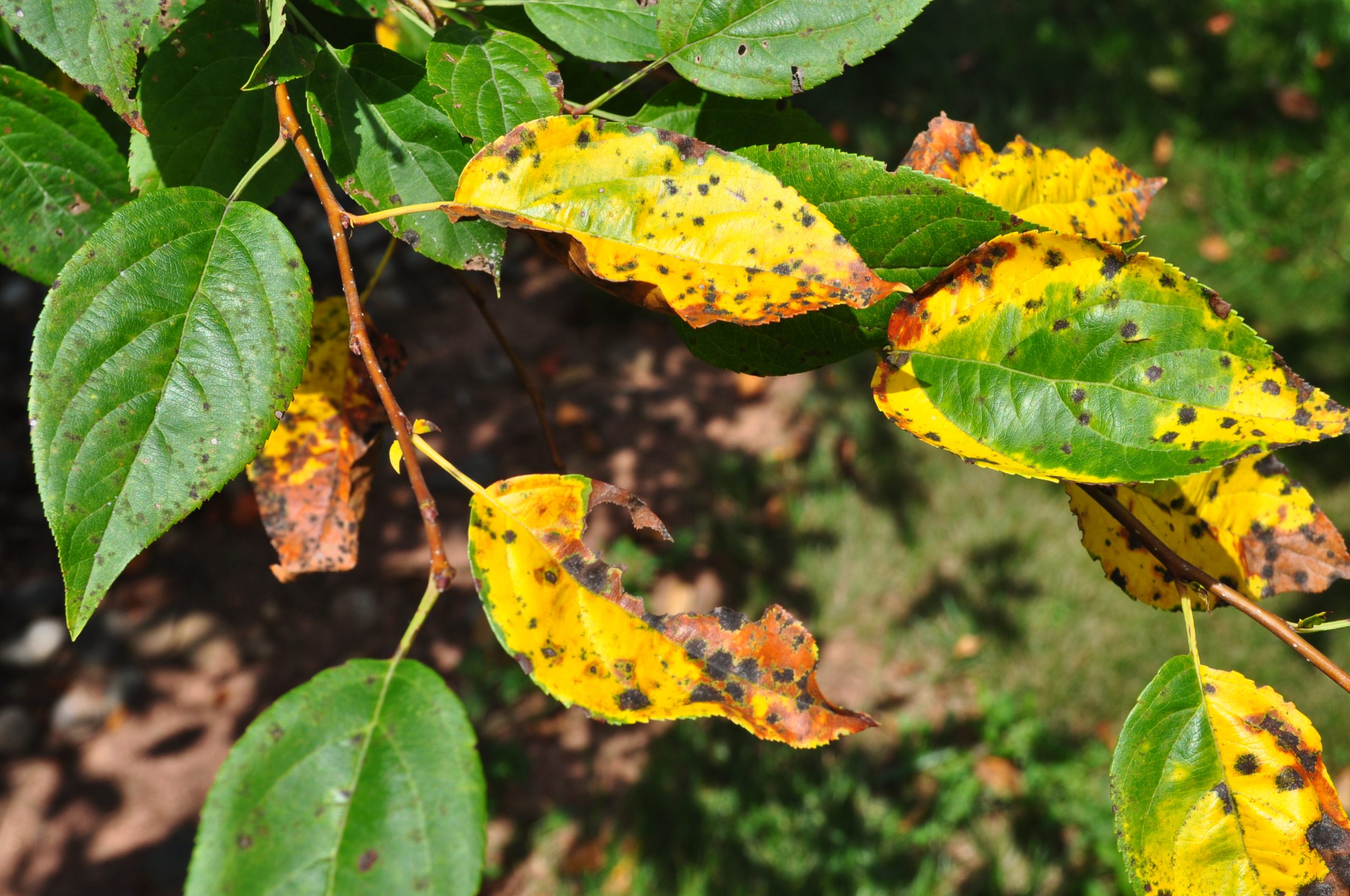
Most of us look forward to Spring, especially after the long, cold winters we receive in New Jersey. Gone away are the drab and cold. Here to stay are rejuvenation, flowers, and warmth. Buds turn into leaves, flowers pop out of the ground, replacing the gray of winter with a splash of color. Lawns begin to green up and people are spending more time outdoors. Unfortunately, while all this is happening, disease pathogens are attaching to certain plants. This usually happens during cooler, rainy weather, which is another staple of Spring.
Common plant diseases are usually separated into two categories: cosmetic and non-cosmetic. Cosmetic plant diseases generally do not cause permanent damage to plants. However, if the plant were to get the same cosmetic plant disease year after year causing premature leaf drop, the plant can weaken to the point where it cannot fight off other pests. While, non-cosmetic diseases can kill the plants if left untreated.
Most plant disease symptoms do not show up until early summer, or even early fall; however, during the cool, wet weather in the spring disease spores are formed and attach to host plants. These spores need certain weather conditions to progress into a full-blown disease epidemic. The most common tree and shrub diseases we see in the landscape are apple scab and rust on crabapples, anthracnose on dogwoods, Volutella on pachysandra, and rust on pear trees. Bellow we will go further into each common tree and shrub disease.
Apple Scab and Rust
Let’s start with the crabapple trees and the common tree diseases. These trees produce beautiful, vibrant flowers in the spring, but can become an eyesore and create a mess of leaves in the summer. When this happens, apple scab and rust are usually the culprit. In the beginning of the plant disease cycle, leaves will have orange spots on the upper part of the leaf, and a spiky appearance below those spots on the bottom of the leaf. The leaves then begin to turn yellow and the result is premature defoliation. Oftentimes, people think the tree is dying. The good news is that these two plant diseases are foliar and will not kill the tree; however, as stated earlier, if the tree gets these diseases year after year, it can weaken the tree to a point where it cannot fight off other pests. The other good news is that the symptoms of these two common tree diseases can be significantly reduced with a sound disease control program. Treatment will need to commence at bud break and another treatment should be applied two to three weeks after initial treatment. The objective of the treatment is to inoculate the leaves to stave off disease spores that create apple scab and rust. Pear rust is very similar to crabapple rust and treatment is the same.

Anthracnose
The second most common tree and shrub disease we run into is anthracnose on Dogwoods, although anthracnose can also be found on a wide array of plants. Symptoms include tan spots on the leaves that can morph into black, crumpled appearances. In severe cases, the shrub disease can reach the twig portion of the tree and cause twig dieback. This results in epicormic growth, or ‘sucker growth’, where the growth shoots form on twigs. With sound cultural practices, the symptoms of this disease can be kept to a minimum. Dogwoods prefer a partly shaded location, so try to avoid planting them in the full sun because sunny locations can stress dogwoods, potentially causing other pests to invade the tree. Be sure to water them during hot and dry periods. Foliar plant disease sprays can be applied in the early spring to help provide another layer of protection. Treatments should begin at bud break and another treatment should be applied two to three weeks after the initial treatment.
Volutella
Finally, this brings us to pachysandra. Pachysandra is a great groundcover that provides beauty in an area where grass usually cannot. It can take several years from planting to a nicely filled pachysandra bed. While a very hardy plant, they do have a nemesis: Volutella. Unlike apple scab and rust which are cosmetic, this shrub disease can and will take out a whole patch if not addressed properly. The symptom of Volutella is the classic ‘frogeye’ lesion on leaves. The outer part of the lesion is lighter brown in color, while the center of the lesion is a darker brown, almost black in color. Volutella can spread very quickly if not addressed. Pachysandra in more sun than shade is usually more prone to this disease, so if you plan to plant pachysandra, make sure the location is ideal. If you have a pachysandra patch that has been hit with Volutella, it can be rejuvenated with these steps:
- Mow down the patch. Yes, you read that correctly, mow it down.
- Once mowed, be sure to remove all the clippings and place them in a sealed, plastic garbage bag. The lesions are on the leaves of the plants, and these lesions are what causes the disease to spread.
- Fertilize with a granular fertilizer to stimulate growth.
- Water the patch to activate the fertilizer.
- Once the new patch grows, pursue a sound disease control program. This should consist of three foliar fungicide applications yearly to help keep the Volutella disease at bay.
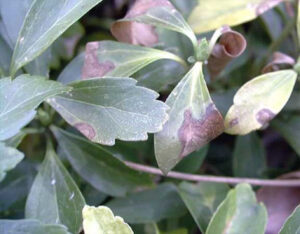
If you are interested in learning about common lawn diseases that are separate from plant diseases that affect your trees and shrubs, check out our blog posts.
In Conclusion
When dealing with common tree and shrub diseases, it is important to understand if the disease is cosmetic or non-cosmetic and if it requires treatment to save the life of the plant. Fairway Green, Inc., can help you identify and control these diseases. If you are in our service area and have any questions or if you would like an estimate for a foliar fungicide program, please do not hesitate to contact our office at 908-281-7888.
Leafminer in Boxwoods
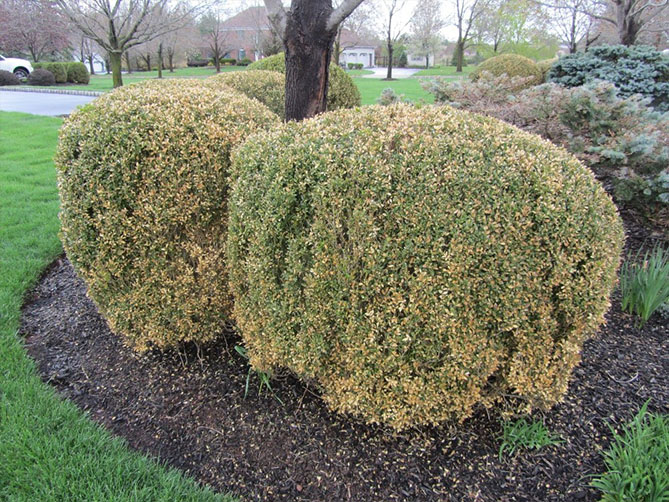
Whether you’re a do it yourselfer or have a landscaper do the work, a well-maintained landscape can improve your property’s value and add curb appeal. Unfortunately, there are many external factors that can impact the overall health of your plants and turn your beautiful landscape into an eyesore. In this blog we are going to focus on an insect that likes to feed on a very popular landscape plant.
Boxwood leafminers are insects that feed between the upper and lower leaf layers of the plant. They are commonly found on boxwoods, which are popular plants in our area because they are marketed as being deer resistant (more on this in a later blog). Although deer may not find boxwoods all that appetizing, leafminer larvae sure do, and they can cause serious long-term damage if left untreated.
How do Leafminers damage boxwoods?
Boxwood leafminer adults lay eggs inside the leaf tissue during the spring. The eggs can hatch into larvae in as little as two weeks. Most of the damage to the foliage is caused by the larval stage as they feed in between the upper and lower leaf layers. The larvae leave serpentine trails as they continue to tunnel through the leaves and feed on tissue. These mines can look snake-like and widen as the insect grows.
If you have boxwoods in your landscape and start to notice blisters or irregularly shaped blotches on the leaves, there’s a good chance you have leafminers. The leaves will turn yellow and appear to be smaller in size. With a heavy infestation, the leaves will have a completely unhealthy appearance and may prematurely drop as a result. In the summer, you can rip open the blistered leaves and often times find the larvae or rass left behind.
Boxwood leafminers over winter as a larva inside the mines on a leaf. When the temperatures warm up the following spring, the larvae become active again and eventually molt into a pupa. In April or May, depending on the weather, they emerge as an orange-red colored adult fly. The adult females live for about a 24-hour period, they mate and then pierce the underside of the leaf and insert her eggs. Then the cycle repeats for the next generation of leafminer larvae.

Notice the yellowing of the boxwood plants caused by leafminers
Boxwood Leafminer Treatment
There’s no way to reverse the foliage damage that leafminers cause to boxwoods. The focus should be on protecting new foliage that the plant will produce. To help reduce boxwood leafminers, there are a few cultural controls you can try. When planting boxwoods in your landscape, select resistant varieties for your property, this will be helpful to fight against leafminer populations. We also recommend the application of fertilizer and soil conditioner to help maintain healthy plant vigor. Another way to help is to prune back the boxwood plant before the adults emerge or right after egg laying.
Pesticides are commonly used to control boxwood leafminer populations. Insect control sprays must be timed perfectly for when the adults have emerged and are laying eggs. This is difficult because the emergence of adults is weather dependent and there is also a very small window of time to apply the product. The best treatment is a systemic soil injection that can be done in the spring. This would control any of the leafminer insects that are present inside the leaves and then give season long control of the boxwood plants. The product lasts one year and would need to be applied annually for continual control.
If you previously had boxwood leafminer damage and get a systemic soil injection, it’s important to touch on pruning. With the soil injection, you are protecting the new growth of the plant, the old damaged leaves will remain unsightly until they eventually fall off. When pruning, pay close attention and avoid cutting off the majority of the new growth, otherwise you’ll be left with all of the damaged and unsightly foliage exposed on the outside again. If possible, wait until the following year before pruning again so you have plenty of new, healthy looking foliage left over.
Conclusion
Boxwood plants are common in New Jersey and protecting them from leafminers can be a difficult task, even with all the available options. If you live in our service area and think you have problems with boxwood leafminer in your plants, feel free to give us a call at 908-281-7888 for a free estimate.
Spotted Lanternfly
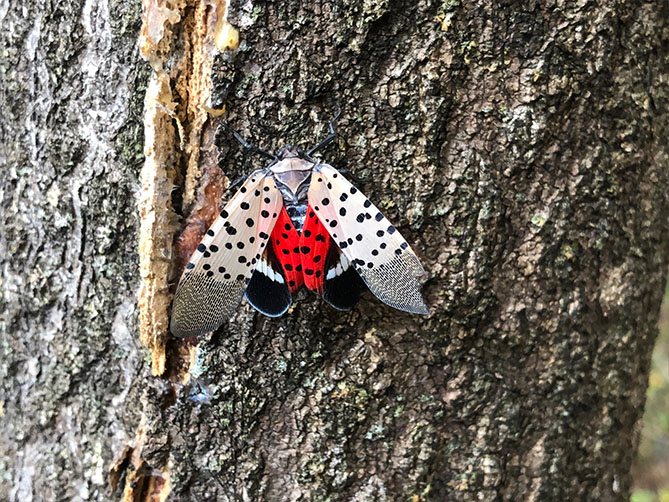

Photo provided by Dr. Richard J. Buckley, Director of Plant Diagnostic Laboratory, Rutgers.
Look out Emerald Ash Borer, there’s a new invasive species taking over the headlines. The Spotted Lanternfly was first discovered in Berks County, Pennsylvania in 2014 and slowly spread into surrounding areas. Unfortunately for New Jersey residents, the spotted lanternfly was confirmed in Warren County during the summer of 2018 and also confirmed in other counties later that same year.
About the Spotted Lanternfly
The spotted lanternfly is native to Asia and it’s believed to have landed in Pennsylvania on a shipment of stone that contained an egg mass. They lay eggs in masses on any type of flat surface; this includes tree trunks, rocks, furniture and equipment left outside. The egg masses look very similar to dried up mud making them very easy to overlook. Fortunately, they only have one generation per year and adults will typically lay eggs between August and December. The nymphs hatch in the spring and are black with white spots in the beginning stages. As the nymphs get to the fourth and final instar stage, they will get red coloration on their body before maturing into adults. You can find the spotted lanternfly adults between July and December.
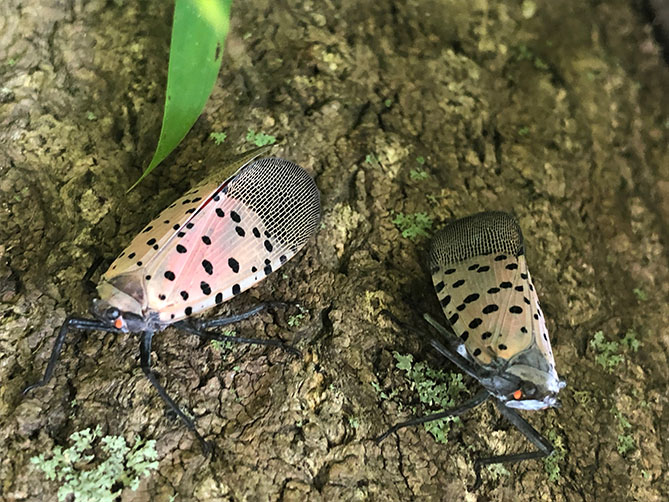
Photo provided by Dr. Richard J. Buckley, Director of Plant Diagnostic Laboratory, Rutgers.
What does the Spotted Lanternfly Affect?
Unlike the Emerald Ash Borer that targets ash trees, the spotted lanternfly has a large range of plants that can be used as suitable hosts. The preferred host in our area is the Tree of Heaven, but the biggest concern is the potential impact on fruit trees and crops. The spotted lanternfly can feed in large numbers, impacting the overall health of the plant resulting in lower yields. The insect has been found on apple and peach trees in Pennsylvania and is a major concern for vineyards. Vineyards have already noticed lower yields on their grapes due to damage from spotted lanternflies. They have also been observed feeding on hops, walnuts and hardwood trees.
The spotted lanternfly doesn’t feed directly on the fruit or leaves, but rather it pierces through the bark or trunk of trees and feeds on the phloem. Because they can feed in such large numbers, this weakens and impacts the long-term health of the plant. As the insects feed on the phloem, they excrete a large quantity of honey dew which drips down the trunk of the tree, onto leaves, and potentially onto fruit. Any areas of the plant that have honeydew built up will start to get dark in color; this is because honeydew is an excellent food source for sooty mold fungus. Sooty mold fungus on leaves hinders photosynthesis and weakens the plant. For winemakers, most vineyards do not use the grapes once they are covered in a certain amount of sooty mold fungus.
Spotted Lanternfly Control
So what can be done? For most harmful insects, natural predators play a key role in keeping everything in balance. Unfortunately, with this invasive species, their natural predators are not here to help us control the population, so we need to find other control methods. First step is to make sure we are not actively transporting and spreading the insect. If you have traveled to areas that have known spotted lanternfly populations (Southeast Pennsylvania, Warren, Mercer or Hunterdon Counties in New Jersey), check your vehicle to make sure they are not on your car. The insects are known to be excellent hitchhikers. In the fall, check your vehicles for egg masses, it is very easy to confuse them for mud so take a closer look just to be sure. If you have any of their preferred host plants in your landscape, primarily the Tree of Heaven, see if you can locate any egg masses and scrape them off the tree, killing the eggs. Another option is removing any Tree of Heaven plants you have in your landscape completely. If you’ve gone through the steps and still have adult spotted lanternflies on your property, chemical control is another option. Using a product that has a good residual activity is preferred in case more adults visit the site after the initial treatment.
Conclusion
If you live in our service area and think you have spotted lanternflies on your property, please give us a call or report it to the New Jersey Department of Agriculture. You can email pictures of suspect insects to SLF-plantindustry@ag.nj.gov or call the New Jersey Spotted Lanternfly Hotline at 1-833-223-2840 (BAD-BUG-0) and leave a message detailing your sighting and contact information.
Preventative Weed Control
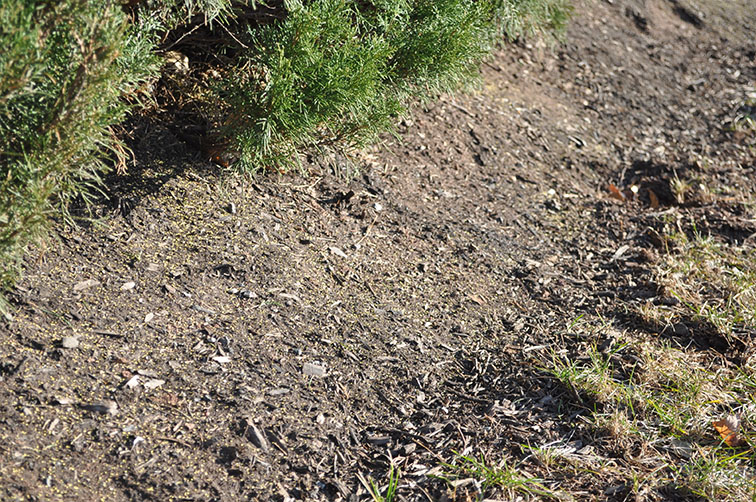
As spring approaches, we begin to think about getting out of the house and spending time outdoors. Whether it is in the garden, planting flowers or sitting back on the patio or deck relaxing, the one thing we do not look forward to is pulling weeds.
A good way to free up your valuable time and keep weeds at bay is to apply a preventative weed control in your landscape beds before weeds begin to grow. A pre-emergent broadleaf weed control or a preventative weed control is a material applied to mulch and/or landscape stone to suppress weed growth. Applications are best when done in the spring before weed seeds in the soil germinate and start to grow. Properly timed treatments will save you countless hours of pulling weeds or a great deal of money by not having to pay your landscaper to do it.
Preventative weed control works by creating a barrier on your mulch, stone, soil, etc., and when weeds germinate and grow roots, the roots then come in contact with the barrier. The preventative weed control then stops the growth of the weed. These materials are not perfect and don’t prevent every type of weed, but they will make a significant difference in your landscape when applied correctly.
There are a wide variety of preventative weed controls available at your local garden center or box store. Preen is a popular granular material that is easily spread in your landscape beds. When purchasing a pre-emergent weed control, it is recommended to check the product label and use a material that does not prevent the growth of perennial plants like tulips, daffodils, and day lilies. Also, when reading the product label, ensure that the product is designed for use in landscape beds and does not adversely affect your ornamental trees and/or shrubs.
Where to apply preventative weed control
Pre-emergent weed control for landscape beds can go on mulch, wood chips, shredded rubber mulch, rocks, stone type areas and soil. However, the effectiveness of the application varies greatly depending on what is treated. The level of control is significantly better on mulch or a small landscape stone than on bare soil. The treatment of pre-emergent weed control on bare soil provides short-term control and might require several applications a year. Therefore, it is recommended to mulch bare soil prior to applying your pre-emergent broad leaf weed control treatments.

The above images show the pre-emergent weed control applied in a shrub bed. Compared to a nickle, you can see just how small the product actually is.

The above image is the same shrub bed with the pre-emergent weed control applied, from a distance.
Weed growth on driveways, sidewalks and patios is best controlled with liquid post emergent weed controls, as granular preventative weed control products normally produce poor results in these locations. In part, this is due to these locations having high foot traffic. High traffic areas alter the breakdown of the material and the soil structure, if there is soil present in these areas. Another factor is that most granular materials are not fine enough to make its way down to the soils surface through the small space between your landscaper pavers and/or cracks in the sidewalk. In these cases, it is best to control weeds with a post emergent weed control.
Cultural practices
Beyond applying a pre-emergent broadleaf weed control on a yearly basis there are other things you can do to minimize weed growth in your landscape beds. Install breathable landscape fabric when new beds are created prior to applying your mulch or stone. Additionally, maintain a layer of approximately three inches of mulch in your landscape beds. We recommend using a quality mulch product, preferably shredded hardwood mulch. These types of mulch help suppress weed growth as well as regulate moisture and temperature levels in your landscape beds. Further, be cautious not to over mulch as too much mulch can be detrimental to the health of your landscape. Most importantly, do not hand pull weeds, as it is extremely difficult to remove the plant in its entirety. In most cases a portion of the plant or its root system will be left in the soil and simply regrow. It is best to treat weeds that breakthrough your barrier with a non-systemic post emergent liquid herbicide.
Conclusion
Instead of spending the season pulling those annoying weeds from your shrub beds, you may be interested in investing in preventative weed control for your shrub beds this springtime. If you are in our service area and have questions regarding pre-emergent weed control, please give our office a call at 908-281-7888 or request an estimate.
How to Keep Deer Away
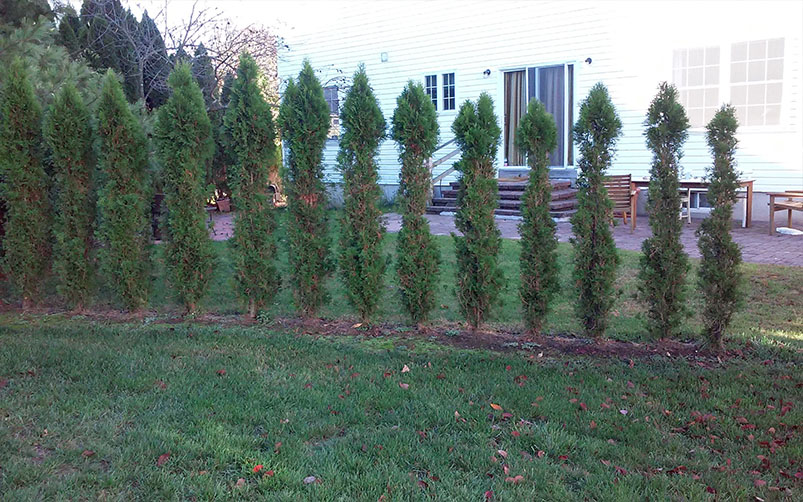
In New Jersey, it’s almost certain that you will see deer on your property throughout the year. With large deer populations, damage to plants is significant and sometimes unavoidable for many homeowners in our area. Many homeowners strive to keep deer away from their landscapes, and we will go over some of the best ways to accomplish that.
Most deer follow a similar movement pattern, meaning they travel from wherever they bed down for the night, to a food source and then back to their bedding area. Depending on their location and the time of year, common food sources may include acorns, farm crops, or your favorite landscape plants. Some common landscape plants they like to feed on are arborvitae, hollies and azalea to name a few. When times get tough for deer and food sources are limited, such as during the winter, even plants advertised as “deer resistant” may still have damage from feeding deer.
Deer feeding may cause permanent damage on some plants, ultimately causing death, however, most times the damage just looks unsightly. Some signs that deer are visiting your property include clipped leaves and hoof prints in the soil around the plants. Deer damage on an arborvitae for instance is very noticeable, as the plant will have a healthy looking top while the bottom areas that deer can reach will be completely bare. Azalea plants produce beautiful flowers each spring if left undamaged during the winter months. Unfortunately, deer like to feed on the foliage and flower buds during the winter, leaving the home owner with fewer flowers and a lot less foliage. A holly plant, like the arborvitae, will look bare on the bottom and fuller on the top. When a plant is damaged, its ability to take up nutrients and distribute them becomes hindered. This type of damage may take years to recover and only if something is done to deter the deer from feeding on the same plant.

This photo shows arborvite that have been eaten by deer
Deer damage can also affect the value of your landscape. If you are not willing to wait years for your plants to recover, after using effective deer deterrents, the only option is to remove and replace. That can be costly, therefore our advice is to prevent deer damage immediately after you install landscape plants. Below, we will go over the best practices to keep deer away from landscapes.
Cultural practices to keep deer away
There are deer deterrent products on the market that can help keep deer away. Motion activated sprinklers are one available option that can help deter deer. When deer, or other animals walk by the sensor, it activates the sprinkler and sprays water in the direction of the movement. The sprinklers work best during warm months and cannot be used when temperatures are below freezing. There also sound and light deterrents that are activated with motion sensors as well.
Physical barriers will also help keep deer away. During the winter, consider wrapping susceptible plants in burlap to help minimize damage. Chicken wire can also be an effective way to protect plants from hungry deer. Finally, deer fencing is also an option but needs to be tall enough to keep deer from jumping over.
Another cultural option is to use deer resistant plants. That being said, if the deer are hungry enough, especially during tough winter months, they will feed on them as well.
Deer Repellent Sprays
There are many sprays available on the market such as Bobbex, Liquid Fence, and Repels All. Most of these sprays are all natural and can be made of many different things that can deter deer (typically eggs, pepper, garlic). These sprays go right onto the foliage of the plants. Most sprays only last a week or two and require multiple treatments. Rain and sunlight will also break down these sprays faster.
We use a product called Deer Off in our repellent program to keep deer away from landscapes. The main ingredients are Putrescent Whole Egg Solids (rotten eggs), Capsaicin and related Capsaicinoids (hot pepper extract), garlic and other ingredients. This product is reminiscent to the smell and look of hot sauce. The Deer Off product will last about a month on the plant material which is why our deer repellent program offers monthly treatments to help minimize damage.
All these methods are just tools in your arsenal they are meant to help reduce feeding and to help keep deer away from your valuable landscape. Unfortunately, there is no guarantee that the above practices will eliminate the deer from feeding on your landscape plants, but they will certainly help reduce the damage.
Conclusion
New Jersey has a lot of deer, especially in our area. Protecting your plants can be a difficult task, even with all of the available options. If you live in our service area and have problems keeping deer away from your plants, feel free to give us a call at 908-281-7888 for a free estimate.
Deep Root Fertilization
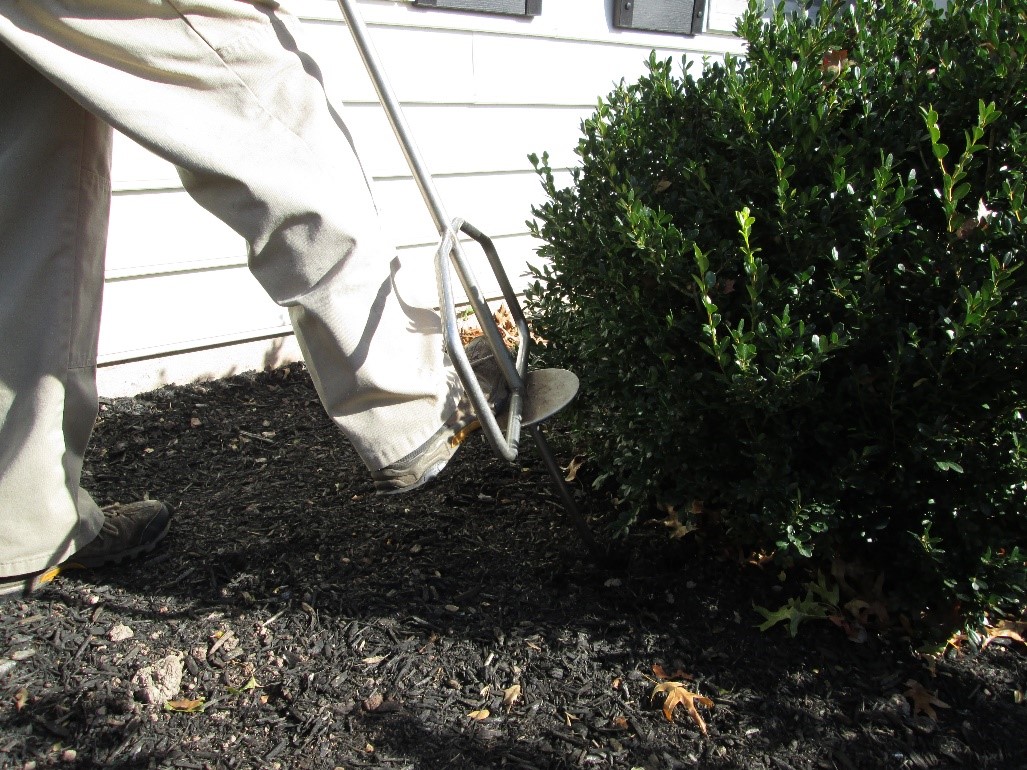
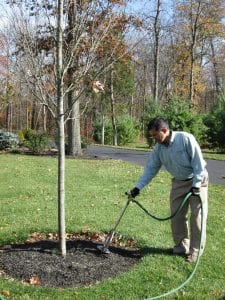
The picture above is a deep root tree fertilization.
Trees and shrubs are living things. Like all living things, they need oxygen, water, and food. In the natural environment, these three essential ingredients are readily available most of the time. Oxygen is always available. Water comes from rain. Finally, food comes in the form of organic matter recycling back into the soil. Organic matter can be leaves, branches, beneficial bacteria, and even decaying animals. This is all part of the “circle of life”. However, this “circle of life” is not as prevalent in the homeowner’s landscape.
Picture a wooded lot that has stood untouched since the beginning of time. Now John The Builder has bought the lot and wants to build 20 homes on half acre parcels. The first thing they will have to do is remove the trees and clear the lots. After this is done, they will need to grade and level the lots. Sometimes additional soil, or fill dirt, is brought in from off site. The existing, untouched, nutrient rich soil gets turned over continuously and mixed in with fill dirt. Next, the builders will have to install temporary roadways and driveways so they can get their construction vehicles in and out without incident. Homes and other structures are built. During this time, new trees and shrubs are planted to create an aesthetic landscape.
Why do I need Deep Root Fertilization?
A few things are happening here to be mindful of. First, ‘fill dirt’ means just that. It holds little to no nutritional value. So now we have this fill dirt mixed in with nutrient rich soil, which dilutes the available nutrients. Also, in untouched soils there are bacteria called mycorrhizae. This bacterial is extremely important to plants because they attach to roots. When mycorrhizae grows, it produces hair-like extensions from those roots. In essence, the bacteria increases the area in which roots can reach for water and nutrients. In landscapes, this bacteria is not readily available because the soils have been disturbed. Organic matter that recycles back into the soil, like leaves, are constantly removed. Not many homeowners leave all the leaves on their yard or in the beds when they fall because it leaves a messy appearance. Believe it or not, leaves are a great source of nutrients. Because we remove a lot of the nutrient sources, our trees and shrubs can benefit from a supplemental source, such as deep root fertilization.
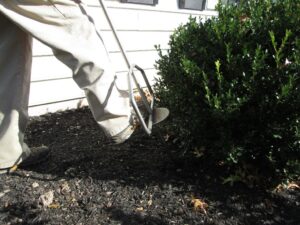
The deep root fertilization injects nutrients directly into the root zone.
Soil compaction also plays a role in nutrient availability. Soils are now compacted from all of the equipment that was used to build the house or install the landscape plants. Compacted soils make it much more difficult for rainwater and nutrients to penetrate and get down to the root system. Rainwater can run right off the compacted soils before they seep into the ground. Also, compacted soils make it harder for roots to ‘breathe’. Finally, the trees that were initially there to provide shade and keep the soil moist are no longer there, and the soils dry out much quicker.
So, how does deep root fertilization help?
Our deep root fertilization treatment combines a complete fertilizer with an organic soil conditioner. Together they are designed to increase plant vitality and improve poor soil conditions. Plants that do not have readily available nutrients can go under stress which opens the door for more problems. So, this is one of the most beneficial applications that can be done to your landscape. If you have any questions about deep root fertilization, please don’t hesitate to call our office at 908-281-7888. Here is a link to our website where you can find more information on our Deep Root Fertilization Treatments and other services for Trees and Shrubs.
Grub Control
Grubs cause substantial and costly damage to lawns in our area every year. Grub damage is permanent and will require seeding to repair areas that have been damaged. Fairway Green Inc. can help protect your lawn from unsightly damage with grub control.
Emerald Ash Borer Damage and Control

The concern for Emerald Ash Borer damage has been on the rise in New Jersey, especially now that many homeowners are seeing the impact to their trees first hand. The damage is fairly easy to spot and quite noticeable this time of year as the infested ash trees will have significant leaf loss and thin canopies when compared to other species of trees you may have in the yard. Left untreated, Emerald Ash Borers can kill your ash trees in as little as two to four years from the initial infestation. Given the volume of calls received related to Emerald Ash Borer damage, we put together this blog article to address some of the most common questions from concerned homeowners in our service area.



